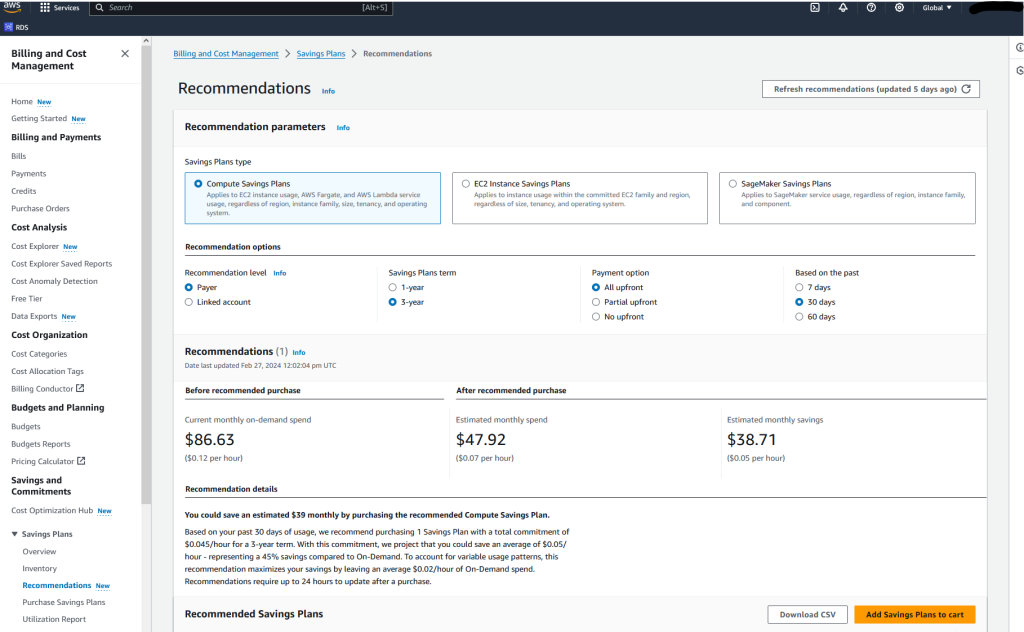Advanced AWS Lambda Cost-Reduction Strategies

AWS Lambda has revolutionized how companies build and deploy applications by offering a serverless compute service that automatically manages the underlying resources. Developers can focus solely on writing code without worrying about infrastructure. However, costs can quickly spiral out of control if not managed properly. Cost optimization becomes crucial to ensure that you leverage Lambda’s capabilities in a financially sustainable way.
This guide explains various strategies to save money on AWS Lambda. We cover Compute Savings Plans, efficient coding practices, and advanced cost-optimization techniques. Whether you are a startup looking to minimize expenses or an enterprise aiming to streamline your cloud costs, you will find valuable insights and actionable steps to enhance your AWS Lambda usage economically.

Understanding AWS Lambda Pricing
AWS Lambda follows a pay-for-what-you-use model that can lead to significant savings compared to provisioning and maintaining servers 24/7. However, costs can add up for high-traffic applications if you do not manage them carefully.
Lambda pricing depends on three key factors:
• Request Count: You pay $0.20 per 1 million requests.
• Execution Duration: Costs depend on the allocated memory and the time your function runs. For example, a function with 512MB of memory executing for 100ms costs roughly $0.000000833.
• Memory Allocation: Allocating more memory increases cost but can also reduce execution time.
Consider a Lambda function with 512MB of memory that executes 500,000 times a month at an average of 800ms per execution. This function might cost around $6.66 for execution duration plus about $1.00 for requests, totaling roughly $7.66 per month. Understanding these fundamentals sets the stage for advanced cost optimization.
Leveraging Compute Savings Plans for Lambda
Compute Savings Plans offer an opportunity to reduce AWS Lambda costs by committing to a consistent amount of compute usage (in $/hour) for a 1- or 3-year term. Unlike traditional Reserved Instances, these plans provide flexibility across multiple AWS compute services, including Lambda, EC2, and Fargate.

When you purchase a Compute Savings Plan, you commit to a specific compute spend in exchange for lower rates. For Lambda, this means your function executions up to the committed level enjoy discounted pricing.
Key compute savings plan aspects include:
• Analyzing usage patterns with AWS Cost Explorer to determine your consistent compute spend.
• Choosing a plan that fits your needs, whether a 1-year or 3-year term and selecting an All Upfront, Partial Upfront, or No Upfront option.
• Purchasing the plan via the AWS Management Console for immediate savings.
For example, assume your Lambda usage costs approximately $500 per month. By purchasing a Compute Savings Plan that covers $400 of compute usage at a 20% discount, your monthly cost reduces to $320. This scenario saves you $180 each month, or about $2,160 annually.
Optimizing Lambda Functions for Cost Efficiency
Optimizing your Lambda functions can further reduce costs by ensuring efficient use of resources. A combination of efficient coding practices and proper resource allocation often leads to significant savings.
Some key Lambda cost optimization strategies include:
• Reduce Execution Time: Optimize your code by improving algorithms, choosing faster libraries, and minimizing external API calls.
• Memory Optimization: Allocate only the memory your function requires. Over-provisioning increases costs without necessarily improving performance.
• Right-Sizing: Experiment with different memory settings to achieve an optimal balance between performance and cost. Tools like AWS Lambda Power Tuning can help automate this process.
Before optimization, a Lambda function with a 1GB memory allocation that executes 1 million times at 800ms per invocation might cost about $18.75 per month. After reducing execution time by 50% and right-sizing memory to 512MB, the cost could drop to approximately $4.68, saving around $14.07 monthly.
Advanced Lambda Cost-Optimization Techniques
Beyond basic optimizations, advanced techniques can further reduce your Lambda costs. These methods focus on enhancing performance and minimizing unnecessary expenses.
Consider the following Lambda cost-optimization approaches:
• Lambda@Edge: Deploy functions closer to the end-user to reduce latency and overall execution cost.
• Lambda Container Images: For complex workloads, container images can streamline deployments and reduce cold start times.
• Scheduled and Event-Driven Execution: Trigger functions only when necessary to avoid idle compute time.
• Monitoring and Logging Optimization: Optimize the amount of data generated by monitoring and logging to prevent unnecessary costs.
These strategies require a balance between performance and cost constraints. Continuously monitoring and adjusting based on usage and performance is key to maintaining optimal cost efficiency.
Real-World Examples and Case Studies
Real-world examples illustrate how companies successfully reduce AWS Lambda costs while maintaining performance.
Case Study 1: E-commerce Platform
• Background: An e-commerce platform faced fluctuating traffic volumes and rising Lambda costs during peak seasons.
• Strategy: The platform adopted a 3-year Compute Savings Plan after analyzing usage patterns. They also optimized Lambda functions by right-sizing memory and refining code.
• Outcome: The platform achieved a 25% reduction in Lambda costs, with annual savings of approximately $120,000. This also improved user experience during high-traffic periods.
Case Study 2: SaaS Company
• Background: A SaaS company saw gradual increases in Lambda expenses as usage grew.
• Strategy: The company implemented efficient coding practices, used AWS Lambda Power Tuning, and adopted Provisioned Concurrency for critical functions.
• Outcome: These efforts resulted in a 40% reduction in execution times and a 30% overall cost saving, with annual savings estimated at around $75,000. Improved efficiency and scalability supported the company’s growth.
Wrapping Things Up
AWS Lambda provides a powerful and flexible platform for running your applications without the hassle of managing servers. However, without proper cost management, expenses can quickly escalate. By leveraging Compute Savings Plans, optimizing function execution, and employing advanced techniques like Lambda@Edge and container images, you can achieve substantial cost savings.
Key takeaways include the importance of continuous monitoring and adjustment of your Lambda functions and regularly reviewing your cost optimization strategies. Both startups and established enterprises can benefit from these techniques, ensuring that AWS Lambda remains both efficient and cost-effective.
Every optimization step matters in the cloud. With careful planning and ongoing refinement, you can ensure that your AWS Lambda usage is not only powerful but also financially sustainable. If you have any questions or need further details, feel free to reach out. Happy optimizing!